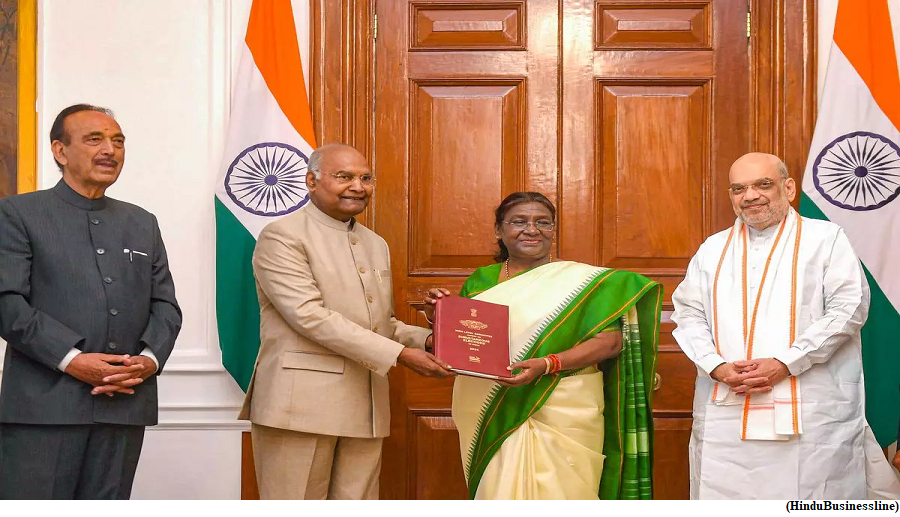A secret superhighway is ready in the Indian Ocean (GS Paper 2, International Relation)

Why in news?
- As the planet warms and experts point to a catastrophic bleaching event in the Great Barrier Reef, there is some ray of hope for the marine ecosystem in the Indian Ocean.
- New research has revealed a coral superhighway in the Indian Ocean, which is formed due to ocean currents carrying larvae between distant islands spread over a million square kilometres, forming new coral reefs.
Gene flow:
- Genetic analyses and oceanographic modelling revealed the superhighway developing around Seychelles, an island nation in the Indian Ocean.
- The analysis confirmed recent gene flow between all sample sites suggesting that coral larvae may be frequently transferred between different populations.
- They then combined the genetic findings with oceanographic modelling to simulate the larve distribution, which provided a visual of the pathways coral larvae take to travel between reefs across the wider region.
Significance:
- Although corals have declined alarmingly across the world due to climate change and several other factors, actions can be taken at local and national scale to improve reef health and resilience.
- They concluded that while the distribution is likely due to the connectivity of the islands, there could be centrally located coral reefs in Seychelles, and possibly East Africa, that may play an important role in linking the most remote islands.
- These simulations also allow to investigate how regular these connectivity patterns are in time because a regular larval supply will be essential for reef recovery in the face of climate change.
- The researchers suggest that this data could help identify major larval sources to be prioritised for inclusion in marine protected areas or active reef restoration efforts.
Coral bleaching:
- The coral reefs across the world are under dire threat from mass bleaching events. The Great Barrier Reef Marine Park Authority (GBRMPA) has announced that this event is part of a worrying trend of heat stress accumulated over the summer, affecting the biologically rich ecosystem off the northeastern coast of Australia.
- The situation is further exacerbated by the El Nino phenomenon, which known for causing warmer ocean waters.
- The US National Oceanic and Atmospheric Administration has warned of a potential fourth mass coral bleaching event on the horizon.
Ram Nath Kovind-led panel recommends 2-step approach, single electoral roll
(GS Paper 2, Polity and Constitution)
Why in news?
- The high-level committee led by former President Ram Nath Kovind submitted to President Droupadi Murmu its report on One Nation, One Poll (ONOP).
- It recommends a two-step approach for holding simultaneous elections for the three tiers of the government, the Lok Sabha (LS), legislative assemblies, and local bodies.
- The 18,626-page report also recommends a single electoral roll and a single photo identity card of electors.

Key Highlights:
- It envisaged a two-step process, where the first step should be to simultaneously hold elections to the LS and legislative assemblies.
- In the second step, panchayat and municipal elections should be synchronised in such a way that they are conducted within hundred days of the elections to the LS and legislative assemblies.
- The committee has suggested that the government must develop a legally tenable mechanism, advising two sets of constitutional amendments, a total of 18, to achieve the objective.
Implementation:
- The panel has not specified a time frame for rolling out its recommendations, but if the amendments are brought about in the next Lok Sabha, simultaneous polls could become a reality by the 2029 LS polls.
- In its report, the committee advised that an ‘Implementation Group’ should be set up to look into the execution of its recommendations.
- It concluded that periods of synchronised elections contributed to relatively higher economic growth, lower inflation, higher public spending and investments, and improved quality of expenditure as compared to those that were not synchronised.
Phases:
- The report recommended that the Constitution need to be amended to introduce phrases like “full term”, “unexpired term” and “mid-term”.
- It urged the Election Commission and the state electoral bodies to make a detailed plan for the men and material required for conducting simultaneous polls, including EVMs and security personnel. The report noted that holding simultaneous polls would reduce voter fatigue and increase voter turnout.
- It, however, clarified that ONOP will not be held on a single day since that was difficult in a large and diverse country, but be held in phases.
- It pointed out that in 1957 seven legislative assemblies of Bihar, Bombay, West Bengal, Mysore, Uttar Pradesh, Punjab and Madras were dissolved before their terms so their respective elections could be held with the Lok Sabha polls.
Model:
- The committee looked at several countries where simultaneous polls are held. Committee member Subhash C Kashyap supported the German model of a constructive vote of no-confidence, where the German parliament can propose a resolution to remove the government only if it names a successor.
- However, the committee felt that India should develop a model of its own considering the mammoth size and diversity of the country.



